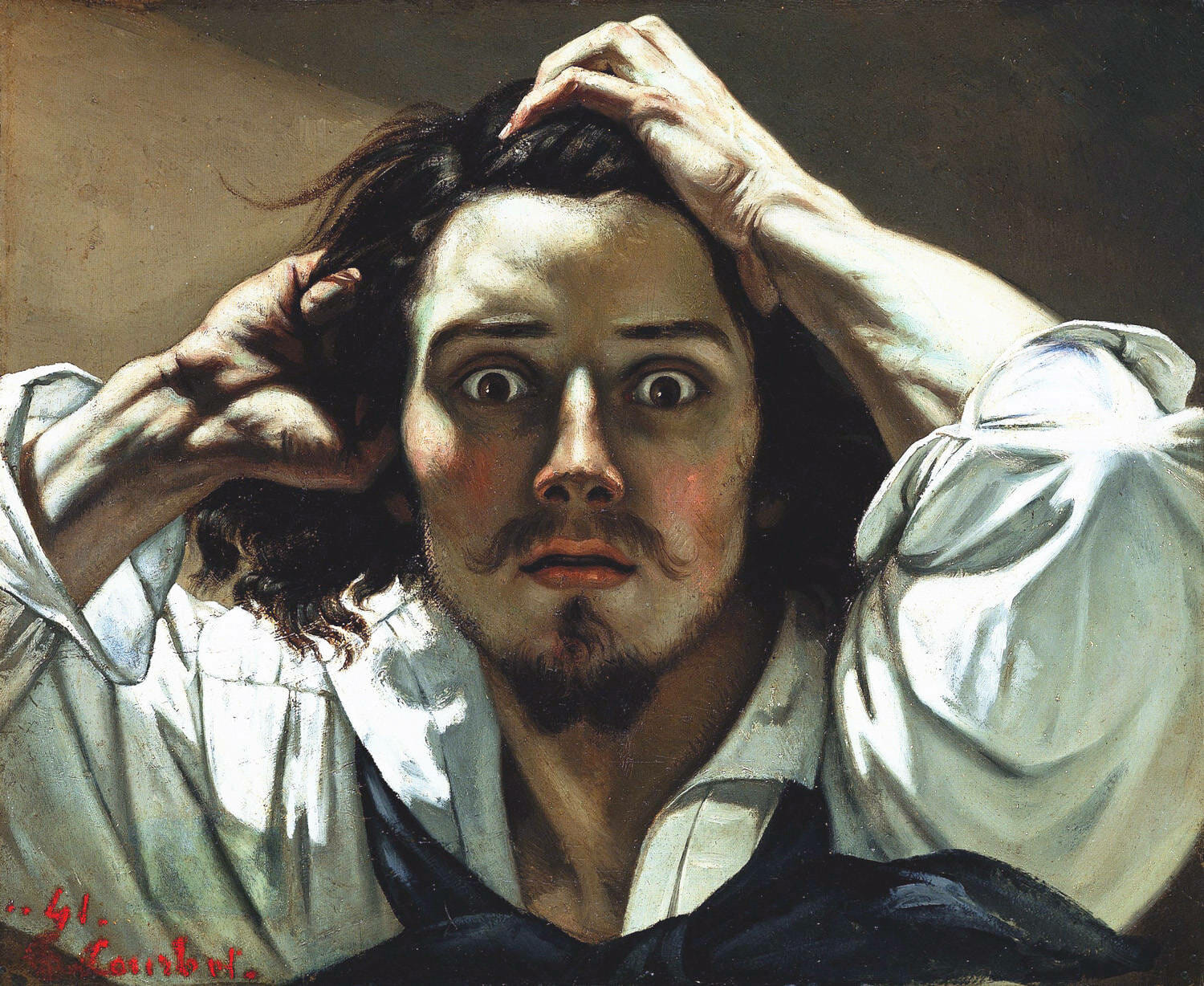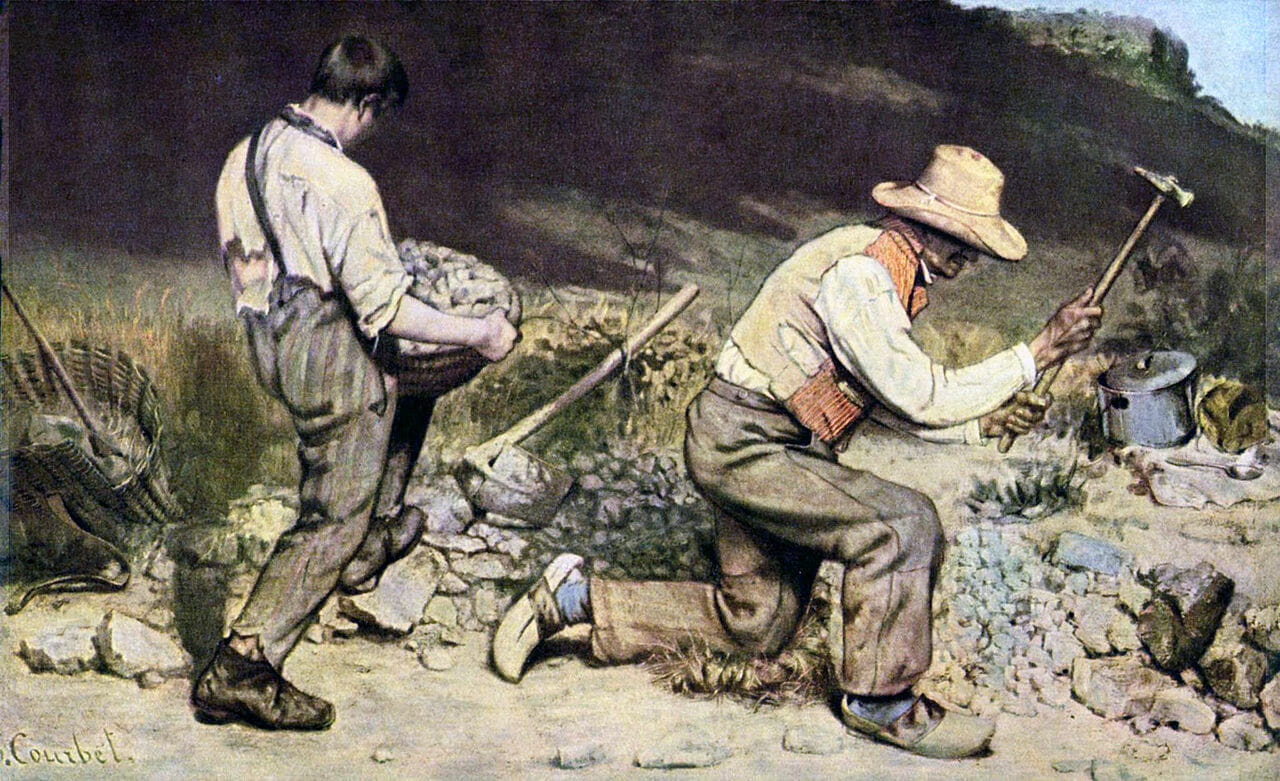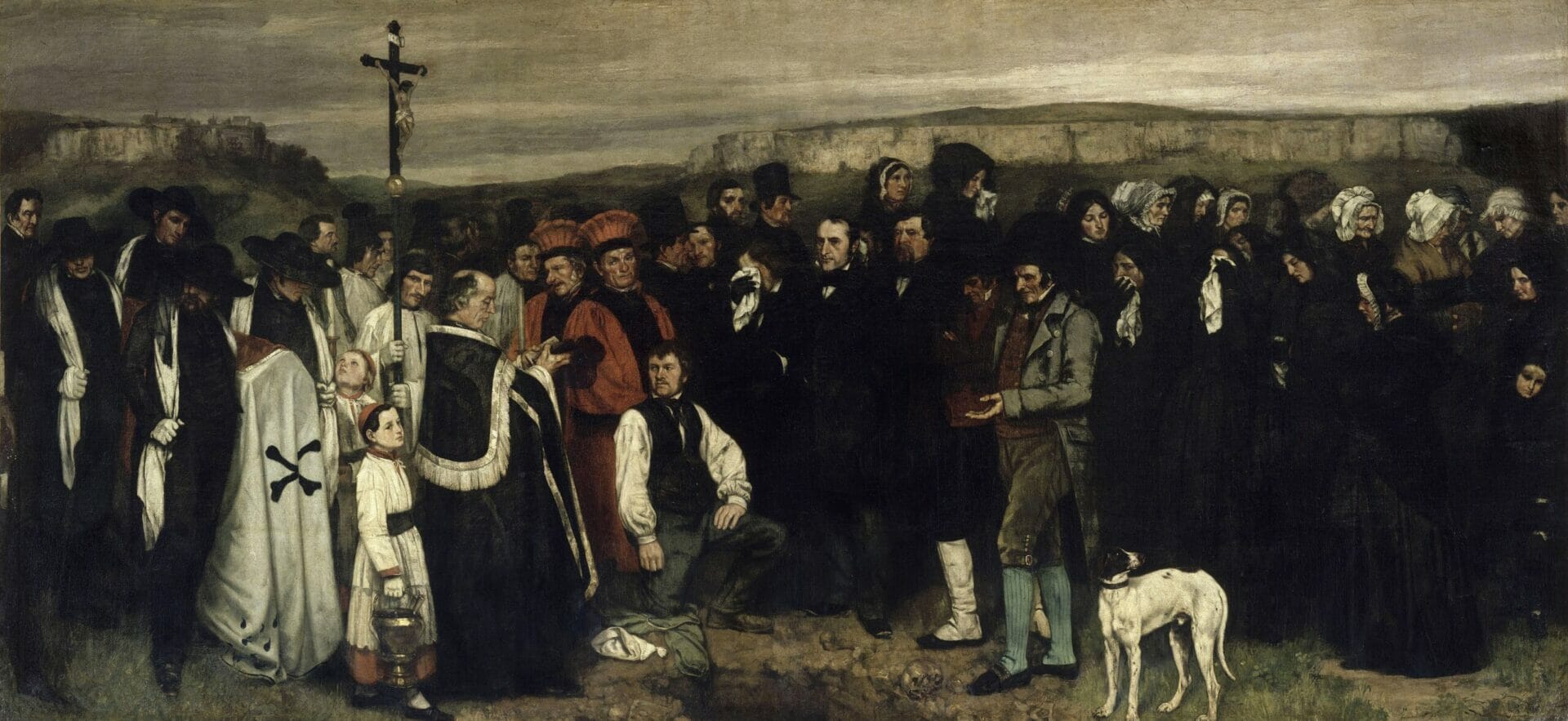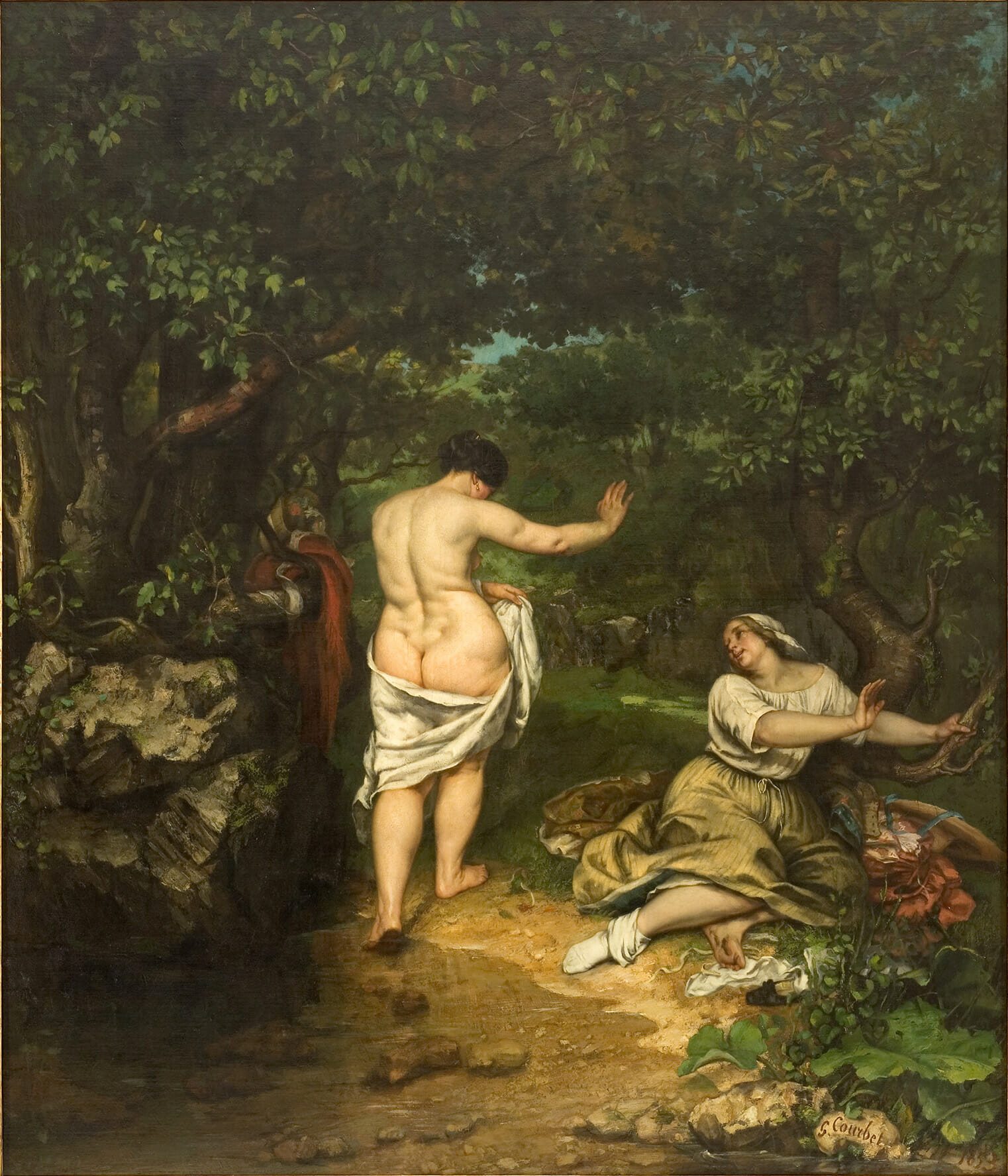
Courbet and the self-portrait of the solitary
Artist
Year
Country
Format
Location of the visited exhibition
Material/Technique
Dimensions
Gustave Courbet, a French painter of the 1800s, was an exponent of French realism. The painter lived in the Romantic era and this influenced his work, but Courbet always tried to keep away from any stylistic definition. In his works, the artist represented the ideas, customs, and habits of his time, as he perceived them. Courbet did not want to limit himself to imitating nature, he did not want to paint for the sole purpose of aesthetics. Courbet aimed to immortalize living art.
For this reason, it was that he also took social issues to heart, aligning himself alongside the literature of realism with its strong connotations of social denunciation that saw Victor Hugo as its main exponent in France, with literary works of the caliber of Les Miserables.

Courbetmoved to Paris in 1839 to study law, but during his stay in the French capital, the artist spent entire days in the Louvre, where he contemplated the works of artists such as Caravaggio, Diego Velasquez, and Harmenszoon van Rijn Rembrandt. In Paris, the artist also made friends with the intellectuals most hostile to the monarchical regime: the accursed poet Charles Baudelaire, the socialist Pierre-Joseph Proudhon, and the critic Jules Champfleury.
The Self-portrait
During his stay in Paris in 1843, Courbet painted a self-portrait entitled Le Désespéré, a work to which he was so attached that he took it with him when he was sent into exile in Switzerland in 1873 for taking part in the demolition of the Vendôme column during the Paris Comune.
The young Courbet portrays himself in the foreground, with his hands in his hair, his lips half-closed, and his eyes wide open looking straight at the viewer, breaking through the fourth wall.
The artist wanted to avoid depicting himself in a traditional pose, breaking the mold. As a revolutionary painter, Courbet wanted to make the bourgeoisie aware of a real feeling: despair.
Courbet’s despair lies in the uncertainty for his future. Out of the academy, artists with a revolutionary style like his were left alone, with no perspective on what their artistic careers would be.
Thus the young man’s expression represents his state of mind at the time and goes against the academic traditions of the austere, composed self-portrait.

The self-portrait is in prevalence light in color, thanks to the light coming from the top left. This light then reflects off Courbet’s white shirt and skin. The points of light create strong contrasts with the areas of shadow, echoing the works of the Dutch painters of the 17th century and Caravaggio’s painting.
Salon des Refusés, the marginalized artists
During the second half of the 1800s, artists desired to break away from the rigid academic style. Art, thus, began to move towards a new current, Realism. Courbet was the greatest exponent of this movement. He also created the pictorial manifesto with the work The Stone Breakers. This work, in fact, has as its subject two men engaged in hard manual labor; represented here without epic or academic solemnity, but raw and poor.
An important step in the spread of this new realist movement was Courbet’s participation in the Paris Salon
Salon, Academy and Refuses: the solitude of artists
Founded in 1667 and sponsored by the French government and the Academy of Fine Arts, the Paris Salon was the most important art exhibition in the Western world between 1748 and 1890. At the Salon, artists from the academy took part. Receiving a prize from the Salon guaranteed these artists a successful career. Courbet, managed to take part in the Salon for the first time in 1851, with his work Funeral at Ornans. Then in 1852 he entered The Bathers. This work scandalized the bourgeois public for the nude woman placed in the center of the painting. And so, in 1855, the Salon decided not to accept any more paintings by Courbet.

With the Salon rejecting numerous works of art, there was a consistent change in the lives of emerging young artists. The Academies no longer protected these artists, so art galleries during the 1830s began to organize private exhibitions. They then were forced to produce works without having the certainty that these would be purchased. Courbet also had to organize his private exhibition, entitled The Pavilion of Realism. In 1863, the Salon jury rejected more than half of the paintings featured. Among them were works by the likes of Manet and Pisarro.

The bourgeois class, with its classical taste, did not understand these artists; on the contrary, it attacked them. These young emerging artists were left alone and, to encourage them, there were only a few enlightened collectors, to whom they tried to sell their works day after day.
So the artists began to foment protests. These reached Emperor Napoleon III, who had traditional tastes, but also had the opinion of the people at heart. Numerous complaints came to the office of the emperor about the rejected works of art. So Napoleon III decided that the works of art would be exhibited, but elsewhere. So in 1863 the Salon des Refusés was born. The Salon des Refusés housed works of art rejected by the Salon, and it received more than a thousand visitors a day.
Solos, self-portrait of human
Solos, the American series launched by Amazon Prime Video and produced by David Weil, starring Oscar winners Morgan Freeman, Anne Hathaway, and Helen Mirren, is an anthology drama divided into seven episodes. Each episode is a Solos, a monologue, or a dialogue between the character and the technological version of himself (with the exception of the episode starring Morgan Freeman). But the title Solos also refers to the feeling of loneliness, one of the leitmotifs of the series. In fact, it is loneliness that accompanies the protagonists of these episodes.
Solos explore the various nuances of bonds in the human sphere. Over the course of these seven episodes, the protagonists’ desperate need to connect with other people is highlighted.
The loneliness in the eyes of the protagonists is the same as that found in Courbet’s gaze two centuries earlier. However, what Courbet felt was a collective feeling. A common feeling that belonged to the entire generation of young artists who were his contemporaries. And it is those frightened eyes, the gaze of a person experiencing a moment of existential fragility are as distant in time as they are close to humanity today.
Tag
Buy a ☕ for Hypercritic







